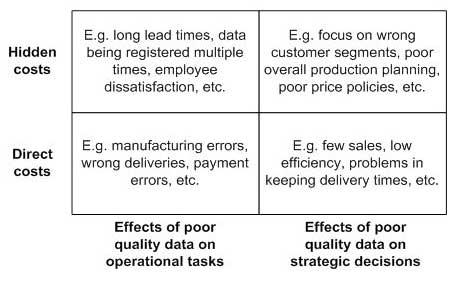 ‘Big data’ is all the rage and perhaps rightly so. But are we getting the basics right in sales and marketing? The chances are you are not and it is costing you revenue.
‘Big data’ is all the rage and perhaps rightly so. But are we getting the basics right in sales and marketing? The chances are you are not and it is costing you revenue.
Sporting teams have been exploding in this space. The data collected now compared to even ten years ago is worlds apart, and for many teams it is driving better decisions and the ‘1%’ improvements needed in a highly competitive environment to win.
However – imagine a team getting to the end of the season and celebrating that they had the lowest resting heart rate of any other team in the competition, the fastest explosive average speed per player over 5 meters and could bench press more than any other. Imagine the amusement at the press conference when they confessed they didn’t know the names of all of their players, they had not been tracking points scored per game, meters gained or position on the ladder.
Sound crazy?
Welcome to the world of business.
So often we can report on detailed production statistics and process efficiencies but our marketing and sales customer data is poor as shown in the following research 1:
- 75 per cent of organisations have identified costs stemming from dirty data
- $611bn per year is lost in the US in poorly targeted mailings and staff overheads alone
- According to Gartner, bad data is the number one cause of CRM system failure
- Less than 50 per cent of companies claim to be very confident in the quality of their data
- Customer data typically degenerates at 2 per cent per month or 25 per cent annually
Figure 1. Four types of costs incurred by poor quality data 1
Fixing these issues can be incredibly valuable.
Here are a few steps to consider. They are basic. But organisation after organisation I go into are not doing them well and it is costing them revenue.
Establish one version of the truth
The bigger the organisation the harder this gets. However, it is still a worthy goal. Collect all of your data in one place. Clean it up so that you do not have duplicate records and other dirty data. There are a number of good organisations that can help you do this.
Get rid of all of those spreadsheets!
Fill in the gaps.
While your marketing data might not be complete, your billing data should be. An organisation I am currently doing some work with – Sema – have done some great creative campaigns with organisations to leverage their billing data to fill in the email and mobile phone fields that were blank for so many customers.
This has enabled marketing to far more effectively communicate across multiple channels to drive customer engagement.
A not for profit I work with has had volunteers in calling through their database and cleaning it up. The net effect was 5% growth in sales last year.
Map The Process
Poor data is NOT an IT problem – It is a whole of business problem and everyone needs to play a role. Once you have your data in one place and it is more complete, you need to take the time to map out the process for ongoing collection of data. Where will it come from and how will it get into your database. How will you make sure that it is entered correctly and kept up to date? Mapping is the first step – then make sure you communicate the process well, get buy-in and ensure accountability.
Make Collection Easy
At a sales level it will often start with a business card. When I scan a business card with my phone it feeds directly into Salesforce and up into my Pardot marketing automation engine. Do you have this in place or your sales team? The easier you make it for them the more likely you are to get compliance.
Marketing should have similar processes in place. Forms on your website and booths at your events should all seamlessly integrate with your marketing automation and CRM solutions.
Ask the right questions
Are you tracking accurately where each lead comes from? Getting this data will help you understand what marketing activities are working and which are not.
Are you asking prospects the questions that will allow you to properly segment your database? Good marketing automation will support progressive profiling through forms to assist with this. This additional data will over time enable you to serve up the right information at the right time to further drive improved progression and velocity through your funnel.
Once you have this basic data right, start then to ensure you have processes in place that measure the basics.
Most of us can report on the final score – sales made. But can you accurately report on ‘meters gained’ – the number of people in your pipeline at each stage of the buying process? Do you track average velocity and progression?
Getting your ‘little’ data right will drive better customer engagement and ultimately revenue growth. Get the game plan right and the results will follow.
Reference: 1. The costs of poor data quality Anders Haug, Frederik Zachariassen, Dennis van Liempd University of Southern Denmark (DENMARK) http://www.jiem.org/index.php/jiem/article/view/232/130


